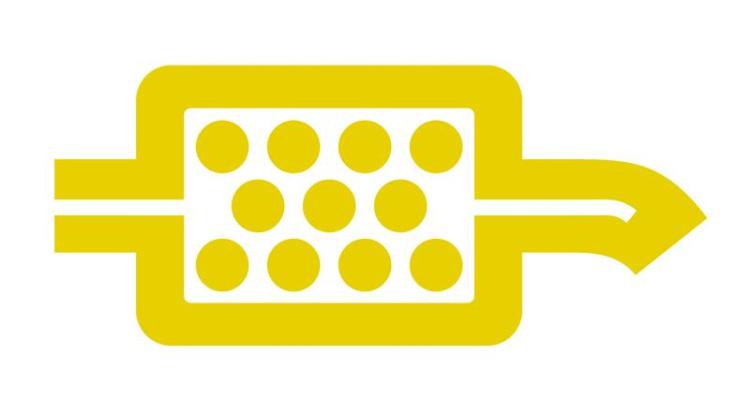DPF Fix Diesel Particulate Filter Remap Tune FAP
A Diesel Particulate filter (or DPF for quick) is a filter determined inside the downpipe phase of the exhaust and is particularly designed to reduce the amount of Diesel Particulate rely on passing through. The goal of this clear-out is to create cleaner / extra eco-pleasant exhaust gases being released into the surroundings.
* Prices may vary between vehicles
How to Clear DPF - Diesel Particulate Filter and Lamba Sensor Repair
Problems with the DPF - Australia Towbars & Performance Guaranteed Results or Your Money Back - 14 Days Money Back & 12 Months Warranty
Removing the DPF is a popular method of solving problems with DPFs and FAPs. A clogged DPF leads to the loss of power and constant car failures. The particulate filter light and possibly engine failure light are always on. Replacing a DPF at the manufacturer’s service station is very expensive, so many drivers choose to deactivate the filter and physically remove it. Is this the only way, though?
Forced DPF and FAP burning out - Good Solution in the Early Stages
The least invasive method, one you should check out first, is forced DPF burning out. Such forced cleaning takes place when the car is parked, and a diagnostic tool is activated. Naturally, only advanced diagnostic equipment and services (including the authorised ones) have such a possibility. Burning out the DPF takes approximately several minutes.
After the diagnostician gives the command, the engine driver revs up, which leads to the ignition of the soot collected in the filter, and next calculates the filling after the burning out. If you drive mostly short distances, with frequent stopping and starting of the car, there is no possibility of the particulate filter self-regeneration (burnout), and it can get clogged. However, it does not mean that the filter is broken. It gathers two types of substances – the soot that is carbon-related or carbon itself, and these are burned out during the process, and the ash that is the result of burning up and is impossible be burnt out completely.
The engine control unit, using the data on the mileage, on the fuel consumption, and on the style of driving, constantly calculates the amount of filter saturation with ash and soot. It attempts to burn out the soot (as I already mentioned, you can also induce the burning out), and the ash is accumulated to the capacity limit of the filter. If the DPF light is on but your car does not have high mileage, more often than not goes only short distances, and your driving style is rather moderate, then forced burnout may solve the problem.
Chemical cleaning, DPF and FAP regeneration - Works for 4-6 Weeks
When “unclogging” the DPF or the FAP by forced burnout is not possible, after removing it from the car, you can try clearing the particulate filter using chemical, mechanical or hydrodynamic methods. It boils down to dissolving or mechanical breaking down (by vibrations or ultrasounds) of carbon deposits, soot and ash, collected in the filter and removing them from the filter. Unless it has some mechanical damage (it is melted or crushed), the filter recovers most of its efficiency.
Since the ash content in the filter is estimated not only on the basis of the data from the differential pressure sensor (as it is designed specifically to assess the content of the soot) but is based mostly on the amount of fuel used, you must “inform” the engine controller that the filter has been emptied of ash. As the particulate filters manufacturers do not provide for mechanical cleaning, and usually put much effort in preventing easy removal of the filter, the only solution seems to be so-called DPF exchange programming. The controller takes the regenerated DPF as a new one and begins filling it with the ash from scratch.
Removing the DPF, the physical removal of the DPF or the FAP
This solution requires not only the mechanical removal of the filter cartridge, but also reprogramming of the engine control unit so that it recognises the filter status as not installed in the car, or at least abandons attempting to regenerate it and calculate the ash saturation. If the saturation is so high that the DPF light is lit (or you receive the information “Antipollution Fault” or similar), then before removing the particulate filter you either program its “exchange” or reset the ash saturation meter in a different way. After the removal, the filter box returns into place.
For off-road use only we can completely remove/delete and disable your DPF.
Benefits:
- better overall performance
- expanded MPG
- keep away from costly repair value
Putting off the DPF is regularly counselled to test the opacity of the exhaust emissions that can supply some indication of any capacity running problems that could impact the operation of the DPF. Problems which include leaking injectors and engines burning oil can vastly lessen the life of a DPF.
If you have problems with your DPF filter contact us and we will advise what is the best solution in your case.
What is a diesel particulate filter?
A diesel particulate filter (DPF) is a filter that captures and stores exhaust soot in diesel cars, in order to reduce emissions. DPFs do not have an unlimited capacity to store soot, so it is important that they are emptied or "burned off" on a regular basis in order to regenerate the DPF.
DPFs become clogged over time for a range of reasons. These can include extensive urban driving (lots of stopping and starting, as opposed to highway driving at a constant speed), faulty EGR (exhaust gas recirculation), using the wrong oil in your engine, faulty fuel injectors, a malfunctioning turbocharger, or not driving for long enough periods.
When a DPF becomes blocked, an engine fault code will display on your dashboard. If this warning is ignored over time, the blocked DPF will cause the car to lose power and go into 'limp' mode. Obviously, there are certain instances where this can be extremely dangerous.
As well, driving your vehicle with a blocked DPF can seriously damage your engine/turbo. This becomes a very expensive problem to fix if you have to replace a turbo.
The good news is that there are products available that help to easily and effectively regenerate your DPF system. The DPF Power Cleaner has been engineered specifically for this purpose.
Regular use of this product as a maintenance strategy reduces downtime for your diesel engine vehicle. When mild service is necessary, the Bluechem DPF Top Gun Cleaner combined with the High-Pressure Gun allows you to clean the DPF without removing it from the vehicle.
If the DPF has become clogged by a build-up of soot and residue, a more aggressive treatment is required. DPF Flushing is a chemical process that penetrates deep inside the honeycomb structure of the DPF, ensuring that carbon and soot residue is dissolved and efficiently blasted out. The flushing liquid is safe for use with aluminium, magnesium, zinc and cadmium parts.
These services are perfectly adapted for the latest generation of particulate filters and will ensure that your engine runs powerfully, efficiently and safely.
Note:
WARNING: It must be ensured that all the requirements of the vehicle manufacturer for changes to and retro-fitting on the vehicle and / or cooling system for the operation with a trailer are carried out.
NOTE: We strongly recommend profesional installation for our wiring kits. Only qualified companies may install the electrical system for the trailer hitch. Improper assembly may result in a serious accident hazard!

